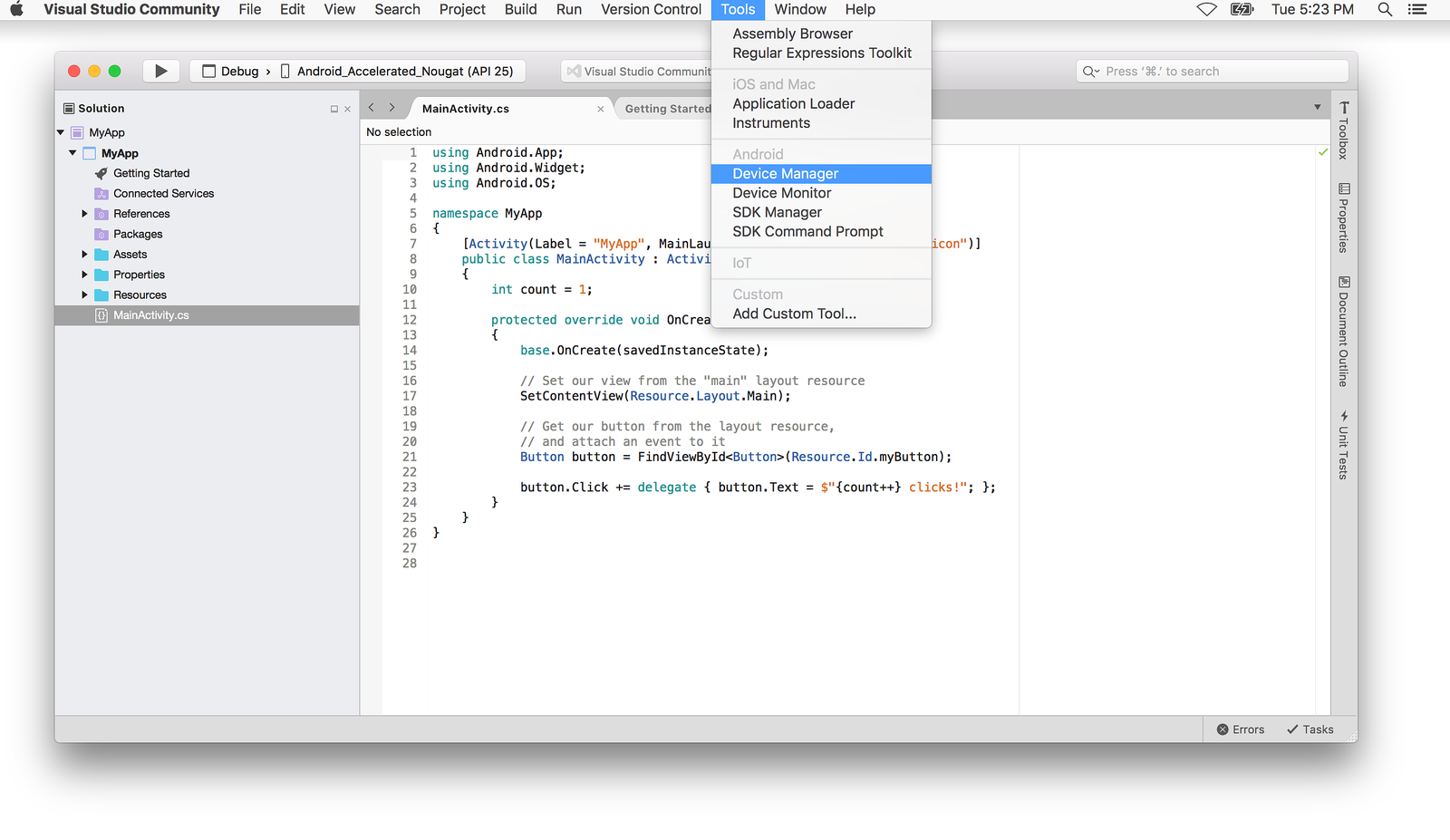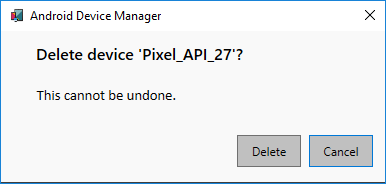


Connect the virtual machine to your virtual switches to make sure the VM has internet access. Set the VM to have 2 CPUs even if your machine has just 1 CPU. My laptop could barely handle 4GB of RAM for the VM but it did the trick. I needed to apply some serious Google-fu: The following 4 settings are crucial for our Android dev setup and no-one really tells you about this.
Android emulator mac visual studio how to#
I won’t go into the details on how to do it as the wizard is pretty self-explanatory. Open the Hyper-V Manager and create a new VM running Windows 10 using the wizard in the Hyper-V Management application. The caveat is that you need to use the Visual Studio Android Emulator instead of Google’s Android Emulator. You can set up Android Studio inside a Hyper-V virtual machine. Again, I haven’t personally verified this, and it isn’t supported by Microsoft, so your mileage may vary.įull disclosure: I work at Microsoft on the Hyper-V team. Run this command on the VM while it is in the OFF state: Set-VMProcessor -VMName -ExposeVirtualizationExtensions $trueĪfter that, you should be able to install the latest version of HAXM within the VM, allowing use of the Android Emulator. If that’s the case, to get HAXM working in a Hyper-V VM, you will need to enable nesting for that VM. That said, the change log for the latest release of HAXM reports that Intel “Fixed an issue with Hyper-V nested virtualization support, which had prevented Android Emulator from booting.” So while it isn’t supported by Microsoft, it seems running HAXM nested in a Hyper-V VM may be possible. From the official documentation, “Virtualization applications other than Hyper-V are not supported in Hyper-V virtual machines, and are likely to fail.”

However, the only Microsoft-supported usage of nested virtualization is running Hyper-V within the VM, not HAXM. Hyper-V added support for nested virtualization in the Windows 10 Anniversary Update (released August 2016) and Windows Server 2016.


 0 kommentar(er)
0 kommentar(er)
